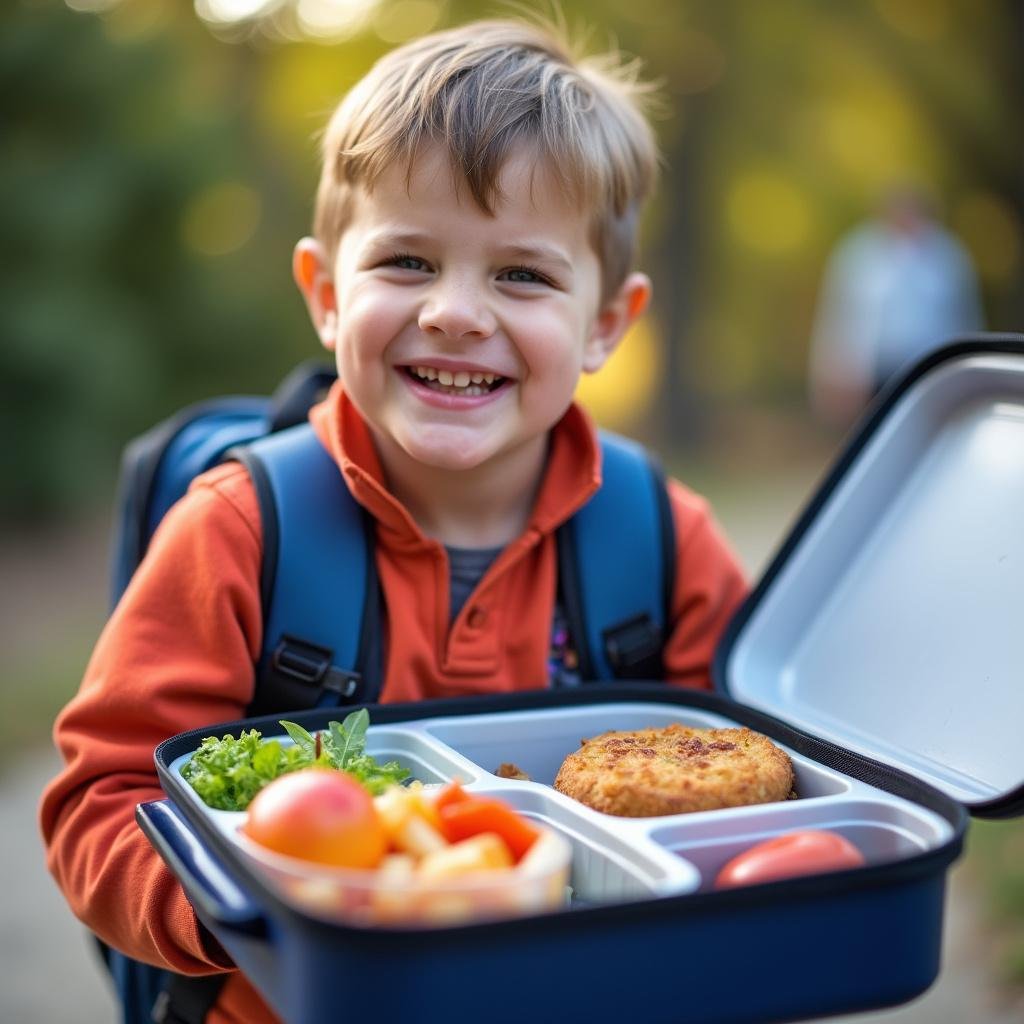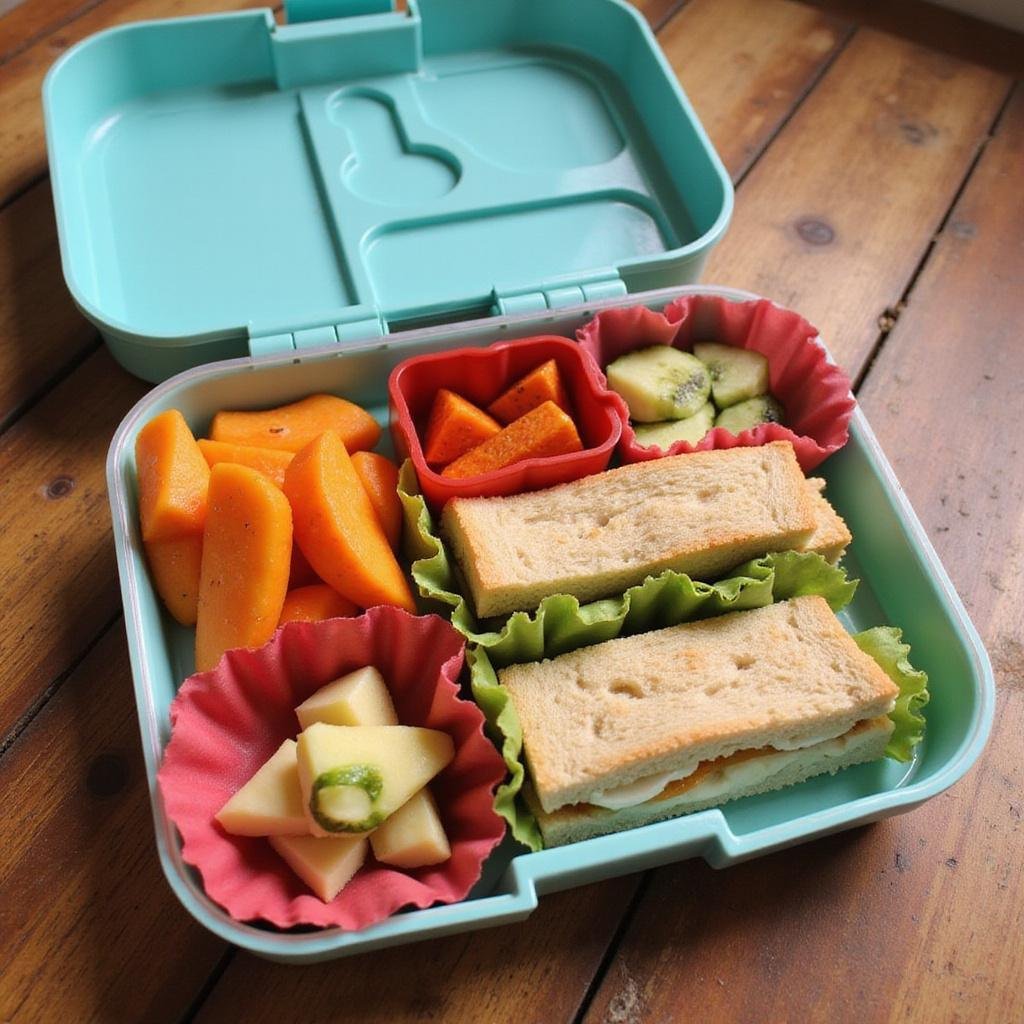1. Introduction
In today’s hectic schedules, parents constantly look for innovative lunchbox recipes that kids won’t trade and that combine both nutrition and visual appeal. The challenge is developing meal options that kids genuinely enjoy while standing out among the many lunch choices at school. Interestingly, the rise of artificial intelligence (AI) and related technologies such as machine learning, deep learning, and automation technology is revolutionizing how we approach meal planning. These advanced intelligent systems harness big data and sophisticated algorithms to craft kid-friendly lunches that taste great and look irresistible. Incorporating tools like the Ninja SLUSHi with RapidChill Technology ensures your lunch remains fresh and appealing. This article delves into how AI development and machine learning can help parents and chefs create lunchbox recipes that children will love and never trade.
2. The Impact of Artificial Intelligence on Lunchbox Recipe Development
Artificial intelligence is transforming industries, and the food technology sector is no exception. By leveraging data science, algorithms, and neural networks, AI helps culinary experts analyze children’s food preferences, dietary restrictions, and flavor profiles. Using powerful intelligent systems, meal planners can optimize recipes for taste, nutrition, and visual presentation, making each lunch both healthy and irresistible. For example, integrating AI-driven tools like the KitchenAid Classic Series Stand Mixer streamlines the preparation of customized snacks, while health-focused apps can provide insights to improve lunch appeal further, joining the forefront of cognitive computing innovations.
3. How AI-Driven Meal Planning Works
The process begins with collecting extensive data on children’s food choices, allergies, and eating habits. This data is then analyzed using natural language processing (NLP) and supervised learning algorithms to identify trending flavors and preferred food combinations. Unsupervised learning uncovers hidden tastes and clusters within children’s preferences, enabling the creation of personalized lunch recipes perfectly suited to each child. By harnessing AI, meal prep becomes a highly tailored process, similar to how cooking games for kids turn into fun, interactive experiences that teach children about healthy eating in an engaging way. For fresh ingredients and efficient prep, tools like the Ninja Air Fryer Pro 4-in-1 make healthy snacks quick and easy to prepare, ensuring meals stay fresh and exciting.

4. Key Technologies Enhancing Lunchbox Recipes with AI
- Natural Language Processing (NLP): Analyzes feedback from children expressing food preferences, enabling the adjustment of recipes for higher appeal. This technology helps parents understand kids’ likes and dislikes, similar to how AI-powered apps interpret natural language input for better meal customization.
- Computer Vision: Utilized to assess visual presentation, ensuring lunch arrangements are attractive and enticing. With innovations like the TOSHIBA EM131A5C-BS Microwave Oven, parents can reheat and plate meals that look appealing, appealing to children’s love for vibrant and colorful lunches.
- Robotics and Automation: Critical in commercial kitchens for mass-producing personalized lunch options with consistency and precision. Combining robotics with Cuisinart Bread Maker Machines ensures fresh bread or baked snacks are part of healthy, AI-crafted lunch menus.
- Big Data Analytics: Collects insights on trending health foods and flavor preferences, refining recipe development continually. This data-driven approach aligns with tools like the KitchenAid Stand Mixer, helping prepare versatile, nutritious ingredients efficiently.
5. Advantages of Using AI for Kid-Friendly Lunch Recipes
Incorporating smart technology and intelligent automation provides numerous benefits to busy parents:
- Personalization: AI tailors meals to individual preferences, dietary needs, and nutritional goals, making each lunch special. The Ninja OG951 Woodfire Pro Connect outdoor grill can complement AI-designed meals for added flavor variety.
- Creativity Boost: AI-generated recipes inspire innovative food pairings and presentation styles, encouraging kids to try new flavors. This strategy is supported by resources like the Clever Fox Recipe Book Spiral.
- Efficiency: Automating parts of meal prep, such as chopping or baking, reduces time and effort for parents. An investment in tools like the Ninja Air Fryer helps quickly prepare loved snacks and main courses.
- Consistency: AI algorithms ensure daily delivery of healthy, balanced, and appealing lunch options, transforming routine meal prep into a science of nourishment and taste.
6. Future Trends in AI and Lunchbox Recipes
The future of AI in meal planning is exciting and full of innovation. Moving forward, we can expect:
- Enhanced Data Integration: Combining health records, dietary restrictions, and real-time feedback for ultra-personalized meals. Devices like the TOSHIBA Microwave fit into this intelligent ecosystem, helping prepare and reheat meals based on evolving preferences.
- Real-time Feedback Systems: Kids can rate their meals instantly via AI-driven apps, prompting prompt recipe adjustments and ensuring optimal satisfaction.
- AI-Generated Meal Designs: Fully autonomous systems creating new recipes based on emerging food trends, dietary data, and individual tastes.
- Integration with Robotics: Robots might soon prepare and pack personalized lunchboxes with incredible precision, combining smart automation and AI for consistent quality and variety.
7. FAQs about AI and Kid-Friendly Lunchbox Recipes
How does artificial intelligence help in developing lunchbox recipes that kids won’t trade?
AI analyzes extensive data on children’s taste preferences, dietary restrictions, and visual appeal, creating personalized recipes that kids find irresistible. By using insights from neural networks and machine learning, AI can generate meals that strike the perfect balance between nutrition and enjoyment, making them less likely to be swapped.
Can machine learning predict which lunch foods kids will love?
Yes, through supervised learning models trained on data like previous preferences, flavor trends, and feedback, AI can accurately forecast favorite foods, enabling parents to prepare lunches that children will cherish and not trade or discard.
What role does computer vision play in creating appealing lunch options?
Computer vision evaluates the presentation and visual appeal of lunch items, ensuring they look colorful and inviting—key factors that influence children’s acceptance and enjoyment of their meals. It ensures that each plate looks as delicious as it tastes.
Are AI-generated recipes healthier for children?
Absolutely. AI development considers nutritional guidelines and specific dietary needs, helping craft healthier recipes that meet daily vitamin, mineral, and calorie requirements, enabling children to enjoy tasty yet nutritious lunches.
Will AI replace human chefs in lunch preparation?
While AI enhances the efficiency and creativity of meal development and automation, it complements rather than replaces human chefs. The combination results in meals that are both nutritious and delicious, harnessing human artistry and machine precision for optimal results.
In conclusion, harnessing artificial intelligence and automation technology has the potential to revolutionize kid-friendly lunch recipes. By integrating neural networks, big data, and natural language processing, we can create appealing, nutritious, and customizable meals that children adore—leading to more enjoyable and stress-free lunch experiences.
Looking for more ideas? Explore kid-friendly dinners that don’t look like kid food and discover fun cooking games to play with kids in the kitchen to turn mealtime into a bonding adventure.

